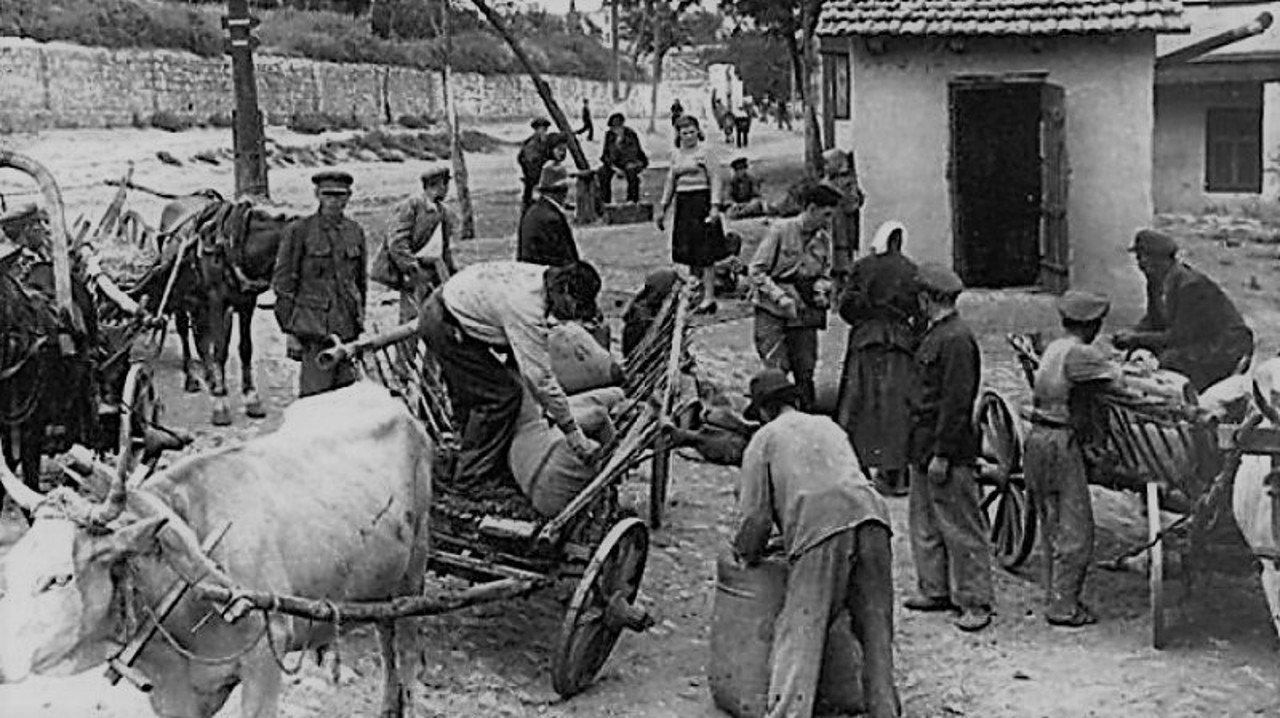In memory of the victims of the organised famine of 1946-1947. Larisa Turea: It's a theme that needs to be put back on the agenda
The third Saturday in April marks the Day of Remembrance for the victims of the organised famine of 1946-1947. Perpetuation of the memory of those who went through the ordeal of the famine, who suffered, died in torment because the totalitarian regime was established on 7 April 2022 by the Parliament of the Republic of Moldova.

At the beginning of March, Stefan Driga from the village of Cocieri, Dubasari district, brought to the National History Museum the suitcase with which his mother used to bring goods from Ukraine.
"She would get up at four in the morning, go there, load the luggage with what she had and come home. The parents went through great hardship, I don't know why they were so unfortunate. My grandfather was shot in Tiraspol in 1937. My father and mother had a hard life. Why such a fate? Why did this Soviet power that came in make a mockery of the people?" asks Stefan Driga.
This chest is a valuable exhibit that will complete the new Famine section of the "Soviet Moldova between myths and Gulag" exhibition.
"The exhibit is also an addition to the Day of Commemoration of the Victims of the Famine, a date officially established on the third Saturday of April. For decades the very notion of famine was banned. It was proof of the criminal nature of an authoritarian state, which is what the Soviet totalitarian regime meant in this area," says Ludmila Cojocaru, PhD in history.
"I have heard so many stories in my life about what happened in that period. During the Soviet period, nothing was said, nothing was written, nothing was allowed, and now, of course, there is a gap, which, here we are, courageous, persevering people are trying to fill", says journalist Nicolae Negru.
The forced starvation and the disastrous consequences of this tragedy are being researched by historians, and people of culture have produced shows, films and thematic exhibitions. The persistent writer Larisa Turea has studied the archives, talked to survivors of the famine and published the fourth edition of The Famine Book.
"It's a theme that needs to be brought back to the forefront so that we remember what it was like that terrible winter of 46-47 when it was freezing and people were condemned to starve to death because it was so cold. As someone said, why didn't they eat roots? Because everything was frozen and the houses were deserted with all the corpses, it was an apocalyptic picture," says writer Larisa Turea.
"The issue of hunger is an element of national identity, unfortunately. We are still waiting for well-developed state policies regarding our national memory and the most tragic threads of our history", points out political analyst Anatol Țăranu.
"Regrettably, the legislation of the Republic of Moldova does not provide for a victim status for those who went through the famine to be recognized as a crime against humanity," says Ludmila Cojocaru, PhD in history.
According to historians, the number of those who died of starvation between December 1946 and August 1947 in the Moldovan Soviet Socialist Republic varies between 250,000 and 300,000 people.




